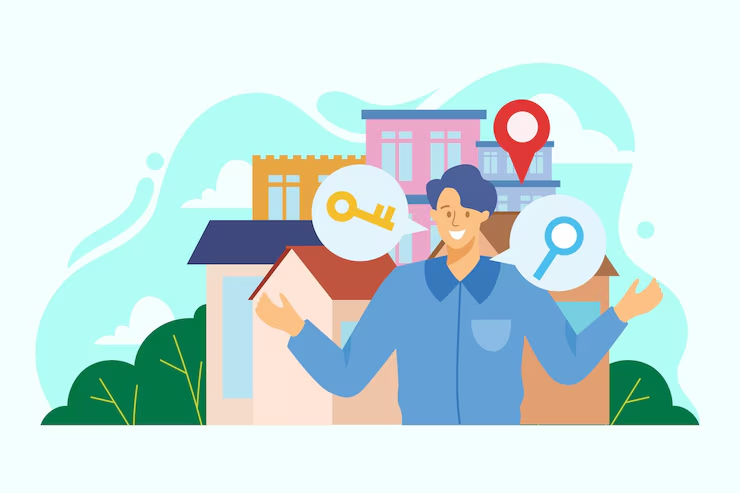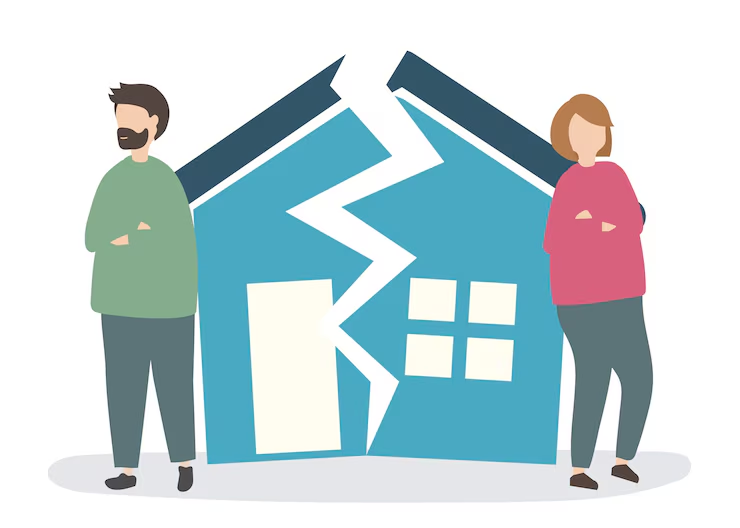
Pros and Cons of a Home Equity Line of Credit (HELOC):
A home equity line of credit (HELOC) allows homeowners to borrow against the value of their property, offering flexible access to funds. It can be a useful financial tool for expenses like renovations or debt consolidation.
The main advantage of a HELOC is its flexibility, but it also carries risks such as variable interest rates and potential impact on home ownership. Understanding both sides helps homeowners decide if it fits their financial needs.
This article breaks down the key benefits and drawbacks to provide a clear picture of how a HELOC works and when it may or may not be a wise choice.
Understanding Home Equity Lines of Credit
A HELOC allows homeowners to borrow against the value of their home, using that equity as collateral. It offers flexible access to funds and variable interest rates, making it distinct from other loan types.
What Is a Home Equity Line of Credit (HELOC)?
A HELOC is a revolving line of credit secured by the borrower’s home. It lets homeowners borrow up to a set limit based on their available equity. The credit can be drawn as needed during a “draw period,” typically 5 to 10 years.
Interest rates are usually variable, tied to benchmarks like the prime rate. As of May 2025, average HELOC rates range from about 7% to 10%, depending on creditworthiness and lender terms.
Borrowers repay only the amount they use, with minimum payments often covering interest during the draw period. This structure differs from a fixed loan and offers more borrowing flexibility.
How a HELOC Works
Borrowers receive a maximum borrowing limit based on their home’s appraised value minus any outstanding mortgage balance. For example, if a home is worth $400,000 and the borrower owes $250,000, the credit limit might be set at 80% of value, or $320,000, minus $250,000, totaling $70,000 available.
Funds can be accessed by checks, credit cards linked to the account, or electronic transfers. During the draw period, users can borrow or repay repeatedly without reapplying.
After the draw period ends, the loan enters the repayment period, often 10 to 20 years, during which the borrower must repay principal and interest, and no further withdrawals are allowed.
HELOC vs. Home Equity Loan
A HELOC differs from a home equity loan in structure and payment terms.
| Feature | HELOC | Home Equity Loan |
| Loan Type | Revolving line of credit | Lump sum, fixed amount |
| Interest Rate | Variable | Usually fixed |
| Payment Structure | Interest-only payments initially, then principal + interest | Principal + interest from start |
| Access to Funds | As needed during draw period | Entire amount at closing |
Home equity loans offer fixed payments and certainty. HELOCs provide flexibility but may have higher payment variability due to changing interest rates.
Both generally have lower rates than unsecured loans, with May 2025 home equity loan rates averaging 7% to 9%. Borrowers should consider financial discipline when choosing between the two.
Key Advantages of a HELOC

A HELOC offers a revolving credit line secured by the borrower’s home equity. It allows for ongoing access to funds, often with more favorable rates than other loan types. The borrower pays interest only on the amount drawn, which can reduce costs during the draw period.
Flexible Access to Funds
A HELOC functions similarly to a credit card but is backed by home equity. Borrowers can withdraw funds as needed, up to a preset limit, and repay them repeatedly during the draw period, typically 5 to 10 years.
This flexibility suits irregular expenses like home renovations or emergency repairs better than lump-sum loans. Unlike construction loans that fund building projects upfront, a HELOC can cover multiple phases or unpredictable costs.
Flexibility also allows borrowers to time withdrawals to match cash flow, rather than receiving a full lump sum and incurring immediate interest on the entire amount.
Potentially Lower Interest Rates
HELOCs usually offer lower interest rates compared to unsecured credit options because they are secured by the home. Rates are often variable, tied to indexes like the prime rate, which has fluctuated historically since the 1970s.
Compared to fixed-rate mortgages or construction loans, a HELOC’s rates can be more responsive to market conditions. This can be advantageous when mortgage rates are high, making refinancing less appealing.
However, rate variability means payments can rise if interest rates increase. Borrowers must consider their tolerance for changing rates when choosing a HELOC.
Interest Paid Only on Amount Used

Unlike a traditional loan where interest accrues on the entire amount at disbursement, a HELOC charges interest only on the funds actually borrowed. This makes it cost-effective if the full credit limit is not immediately needed.
During the draw period, borrowers can control the principal balance and reduce interest costs by borrowing smaller amounts or repaying quickly. This differs from construction loans, where funds are released in stages but interest starts on each disbursed amount immediately.
Reducing interest payments can free cash flow for other financial needs without sacrificing access to a larger credit amount if necessary.
Uses for Home Improvement or Major Expenses
HELOCs are often used to finance home improvements that can increase property value. They are suitable for projects that have varying costs or multiple stages, unlike construction loans which are more structured and for new builds or major remodels.
In addition to home upgrades, a HELOC can cover major expenses like medical bills, education costs, or debt consolidation, offering an alternative to unsecured loans with higher rates.
Borrowers considering refinancing should evaluate if accessing home equity through a HELOC is more beneficial than adjusting their primary mortgage, especially with historically fluctuating mortgage rates up to 2025.
| Use Case | Loan Type | Interest Condition | Funding Availability |
| New home construction | Construction loan | Interest starts as funds disbursed | Lump-sum or staged disbursement |
| Home improvements | HELOC | Interest on drawn amounts only | Revolving credit line |
| Debt consolidation | HELOC or refinance | Varies by loan | Depends on loan and equity |
This table contrasts HELOC uses with other loan types to clarify key benefits.
Disadvantages and Risks of a HELOC

A HELOC carries significant risks that borrowers should consider carefully. These risks include the possibility of losing their home, the impact of variable interest rates, and the potential for overspending leading to increased debt.
Risk of Losing Your Home
Because a HELOC uses the home as collateral, failure to keep up with payments can result in foreclosure. Borrowers must understand that missed payments put their property at immediate risk.
This risk is higher if the HELOC balance grows due to additional draws. Homeowners relying on a HELOC for debt consolidation must ensure they can commit to monthly payments without stretching their budget.
Lenders usually require a good credit score and stable income before approval, but sudden financial hardship can still lead to default. In essence, the security aspect of a HELOC is a double-edged sword: it can help reduce interest costs but endangers the home if debts become unmanageable.
Variable Interest Rates
HELOCs commonly have variable interest rates that adjust based on market indexes, such as the prime rate. This means monthly payments can increase unexpectedly, affecting budgeting.
Borrowers might begin with low introductory rates, but these can rise, making the loan more expensive over time. Unlike fixed-rate loans, the fluctuating costs complicate long-term financial planning.
Increases in rates can be particularly harmful for those already close to their borrowing limits. It’s important to review the HELOC terms carefully and consider potential rate hikes before borrowing.
Possible Overspending and Debt Accumulation
Access to a revolving credit line via a HELOC can tempt borrowers to overspend. Instead of using it solely for planned expenses like home improvements or debt consolidation, some may treat it as extra cash.
This behavior can lead to a cycle of borrowing that increases total debt, negating efforts to consolidate or reduce financial burdens. Poor management of a HELOC can also negatively affect credit scores due to higher utilization rates and missed payments.
To mitigate these risks, borrowers should track spending carefully and avoid drawing more than they can repay. Using a HELOC responsibly is essential to prevent further credit damage and financial strain.
HELOC Qualification and Application Process

Qualifying for a HELOC involves meeting specific financial criteria and following detailed application steps. The process affects credit scores differently depending on the method lenders use to review applications.
Typical Eligibility Requirements
Lenders commonly require a minimum mortgage balance, usually at least 15% of the home’s value, after accounting for the requested HELOC amount. For 2025, many lenders expect borrowers to maintain a combined loan-to-value (CLTV) ratio below 85%.
A credit score above 660 is typically needed to qualify, though this varies by lender. Income documentation, employment verification, and a low debt-to-income ratio (usually under 43%) are also critical. Applicants with scores below 660 might face higher interest rates or rejection.
Steps in Applying for a HELOC
The application starts with submitting personal financial information and proof of income. Lenders perform a property appraisal to determine current home value, which influences borrowing limits.
After initial review, applicants provide detailed documentation on debts and assets. Approval can take anywhere from 2 to 6 weeks. Once approved, borrowers receive terms that outline credit limits, draw period, and repayment schedules.
Impact on Credit Score
During application, lenders usually perform a hard credit inquiry, which can lower scores by 5-10 points. This impact is temporary and less severe if the applicant’s score is already strong.
Regular use and timely repayments on a HELOC can improve credit utilization and boost scores over time. However, maxing out the credit line or missing payments can damage credit health. Applicants aiming to raise their score significantly within 30 days should consider easier credit options like the easiest credit cards to get, as HELOCs are less effective for fast boosts.
Financial and Tax Implications
A HELOC impacts finances by changing monthly cash flow and taxable income. Understanding interest deductibility and repayment terms is essential to weigh costs against benefits.
Effect on Net Income and Cash Flow
Net income is the amount left after all expenses, including taxes. Borrowing through a HELOC does not directly affect net income since it is a loan, not earned income.
However, the monthly payments on a HELOC reduce cash flow. Payments include principal and fluctuating interest, which may increase with rate changes.
Reduced cash flow can strain budgets, especially if rates rise. Borrowers should calculate monthly payments based on current interest rates to assess affordability.
Maintaining positive cash flow means ensuring HELOC obligations do not exceed surplus income after other expenses.
Tax Deductibility of HELOC Interest
Interest paid on a HELOC is tax-deductible only if the funds are used to buy, build, or substantially improve the home securing the loan.
The deduction falls under mortgage interest rules, subject to limits. For loans taken after 2017, interest on up to $750,000 of total mortgage debt can be deducted.
Interest used for other purposes, such as paying bills or investments, generally isn’t deductible.
Taxpayers must itemize deductions to claim HELOC interest, which may not be beneficial if the standard deduction is higher.
Federal income tax rates and tax brackets influence the value of deducting HELOC interest, impacting overall tax liability.
HELOC Repayment and Long-Term Costs
HELOC repayment affects long-term finances through interest accrual and principal reduction schedules. Interest rates are usually variable, making future costs uncertain.
Borrowers who only pay interest may face higher total repayment and a large principal balance at the end of the draw period.
Failing to repay principal increases the risk of owing more than the home’s value if property prices fall.
Long-term capital gains tax applies if a HELOC is used for investments sold later at a profit, with rates varying by holding period and income bracket.
Short-term capital gains tax, typically higher, applies to assets held under one year. HELOC use impacts these taxes only when proceeds fund taxable investments.
Alternatives to a HELOC

Other financing options can offer fixed rates, different repayment terms, or flexible credit that may suit various needs. Each alternative has unique features affecting borrowing costs, approval criteria, and risk levels.
Cash-Out Refinance
Cash-out refinancing replaces the existing mortgage with a larger loan, allowing borrowers to access home equity as a lump sum. It often offers lower interest rates than a HELOC because it is a first mortgage rather than a secondary line of credit.
Borrowers benefit from fixed rates, providing predictable payments. However, closing costs can be higher, and the loan resets the mortgage term. It works well if the goal is a large withdrawal under stable borrowing conditions.
FHA loans, a government-backed option, permit cash-out refinancing with competitive terms for qualified borrowers. These loans favor those with lower credit scores or smaller down payments, but they require mortgage insurance premiums.
Personal Loans and Credit Cards
Personal loans provide a fixed amount with set repayment schedules and fixed or variable interest rates. They require no collateral, so approval depends heavily on creditworthiness and income.
In May 2025, some of the best personal loans with a cosigner may offer lower interest rates and increased approval chances, making them useful for borrowed sums under $50,000. Credit cards, including the best credit cards of May 2025, offer revolving credit for smaller or ongoing expenses but typically come with higher interest rates than personal loans.
Personal loans and credit cards offer quick access to funds without risking home equity but usually carry higher costs and shorter repayment periods.
Home Equity Loan
Home equity loans provide a lump sum with fixed interest rates and fixed monthly payments. The loan is secured by the home, similar to a HELOC, but it does not offer a line of credit or flexible withdrawals.
These loans are useful for borrowers who want predictable payments and need a specific amount upfront. Rates are generally higher than cash-out refinance but lower than unsecured personal loans.
Borrowers must qualify based on equity and credit, and failure to repay risks foreclosure. This option suits homeowners who want a one-time disbursement with stable borrowing terms.
HELOC Use Cases and Real Estate Considerations
Using a HELOC can provide flexible financing for a range of real estate-related needs. It is crucial to evaluate each purpose carefully, as the implications vary based on market conditions, home value, and personal financial goals.
Home Renovations and Value Enhancement
Homeowners often use a HELOC to fund renovations that increase a home’s livable square footage, improving market value. For example, adding a finished basement or extending a kitchen may significantly raise resale value, especially in states where median home prices are high.
Calculating square feet correctly matters because appraisers and buyers focus on usable space when determining worth. Investing HELOC funds in projects that add functional space generally yields better returns. However, homeowners should avoid over-improving relative to neighborhood standards to protect their investment during fluctuating market conditions.
Debt Consolidation
A HELOC offers a way to consolidate high-interest debt, such as credit cards or personal loans, into a lower-interest, tax-deductible form. This option can reduce monthly payments and total interest costs.
Borrowers should ensure their income supports HELOC repayment without risk to their home. Since HELOC interest rates can rise, it is wise to factor in potential increases before shifting debt. Debt consolidation via a HELOC works best when the homeowner has stable credit and predictable cash flow.
Investment Opportunities
Some use a HELOC to finance real estate investments, such as down payments on rental properties or flipping homes. This approach can leverage their primary home’s equity to diversify holdings or generate rental income.
However, using HELOC funds for investments requires careful analysis of market trends, including median home prices by state and local demand. Recession concerns should not automatically prevent investment but emphasize the need for conservative borrowing and exit planning to avoid jeopardizing the primary residence.
Managing and Repaying Your HELOC Responsibly
Proper management and repayment of a HELOC require careful planning and awareness of common pitfalls. Sticking to a well-designed repayment schedule and avoiding typical mistakes can help maintain financial stability and preserve credit health.
Developing a Repayment Strategy
A solid repayment plan begins with understanding the draw and repayment periods of the HELOC. During the draw period, the borrower can withdraw funds but must make at least interest payments. Afterward, principal repayments typically begin, increasing monthly payments.
Setting a budget to cover monthly HELOC payments helps avoid missed deadlines. Prioritizing HELOC payments over discretionary spending reduces debt faster and avoids higher interest costs. Combining HELOC debt with other debts through debt consolidation can streamline payments without harming credit, especially if managed carefully.
Using extra funds from simple ways to make $100 fast, such as freelance work or selling unused items, can accelerate repayment. Regularly reviewing the balance and adjusting payments ensures the borrower does not accumulate unnecessary debt.
Avoiding Common Mistakes
One common mistake is treating the HELOC like a credit card, borrowing beyond affordable repayment limits. This can trigger financial strain when the draw period ends, and principal payments start.
Failing to track interest rate changes on variable-rate HELOCs can lead to unexpected payment increases. Borrowers should monitor the rate and adjust their budget accordingly.
Another error is neglecting to make timely payments or missing them entirely, which harms credit scores and may cause penalties. Setting up automatic payments can prevent this issue.
Using HELOC funds for non-essential expenses rather than debt consolidation or urgent needs also increases financial risk. Maintaining discipline in spending preserves the loan’s intended benefits.
How Current Market Trends Impact HELOCs

Current economic factors such as interest rate changes and housing market conditions directly affect the costs and availability of HELOCs. Shifts in federal policies and home prices influence borrowing power and repayment expenses for homeowners.
Interest Rate Fluctuations in 2025
In 2025, the Prime rate and federal funds rate have experienced moderate increases. Lenders often tie HELOC variable rates to the Prime rate or the Cost of Funds Index (COFI), so rising rates raise borrowing costs. Although inflation has slowed, rates remain elevated compared to pre-pandemic levels.
This rate environment means monthly payments on HELOCs can fluctuate unpredictably for borrowers with variable rates. Higher rates reduce the attractiveness of drawing additional funds since interest expenses rise alongside rate hikes, impacting affordability.
Borrowers should monitor these trends closely, as future rate changes will continue affecting the overall cost of credit lines tied to market rates.
Housing Market and Home Equity Availability
Home prices in many regions remain high despite cooling from previous peaks. This sustained valuation supports significant home equity levels, increasing borrowers’ access to HELOCs. However, slower price growth limits rapid equity gains compared to earlier years.
Some markets face stagnant or slightly declining values, which may constrain borrowing capacity as lenders reassess collateral values. Inflation pressures on living costs also reduce disposable income, potentially affecting loan approval or repayment ability.
Homeowners must evaluate local price trends as equity availability varies significantly by location, influencing the maximum HELOC amount offered by lenders.




